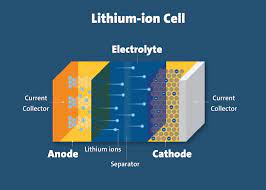The evolution of lithium-ion (Li-ion) battery technology is a fascinating journey that has significantly impacted modern electronics, electric vehicles (EVs), and renewable energy storage systems. This article outlines key milestones and innovations in the development of lithium-ion batteries, highlighting how they have become the dominant technology for rechargeable energy storage solutions.

The Birth of Lithium-Ion Batteries
The concept of lithium batteries was first proposed in the 1970s, with the pioneering work of M.S. Whittingham, who used lithium’s high electrochemical potential to create a lithium battery. However, these early versions were non-rechargeable and posed safety risks due to lithium’s reactivity.
The First Commercial Lithium-Ion Batteries
The first commercially viable lithium-ion battery was developed by Akira Yoshino in the 1980s. Yoshino’s design used lithium cobalt oxide (LiCoO2) as the cathode and a carbon material as the anode, which significantly improved safety and allowed for rechargeability. Sony commercialized the first lithium-ion battery in 1991, revolutionizing portable electronics by offering higher energy density and longer lifespans than previous battery technologies.
Advancements in Cathode Materials
Following the commercialization of lithium-ion batteries, research and development focused on enhancing performance and safety. Innovations in cathode materials played a crucial role, with the development of lithium iron phosphate (LiFePO4), lithium manganese oxide (LiMn2O4), and lithium nickel manganese cobalt oxide (NMC) offering various benefits, including improved thermal stability and longer cycle life.
Anode and Electrolyte Improvements
Simultaneous advancements in anode materials and electrolytes have contributed to the evolution of lithium-ion batteries. The introduction of silicon-based anodes has promised higher capacities than traditional graphite anodes. Meanwhile, improvements in electrolyte compositions have enhanced ionic conductivity and operational safety.
The Rise of Electric Vehicles
The demand for efficient and long-lasting batteries for electric vehicles has significantly propelled lithium-ion battery technology forward. Innovations in battery management systems (BMS), cooling technologies, and modular designs have enabled EVs to achieve longer ranges and faster charging times.
Towards Sustainability and Beyond
As the global demand for lithium-ion batteries continues to grow, there is an increasing focus on sustainability. Efforts to develop recycling technologies for battery materials and the search for alternative materials with lower environmental impact are ongoing. Furthermore, solid-state battery technology is emerging as a promising direction for the future, offering the potential for higher energy densities and improved safety.
Conclusion
The evolution of lithium-ion battery technology is a testament to the importance of continuous innovation in meeting the energy demands of modern society. From powering portable electronics to driving the adoption of electric vehicles and supporting renewable energy systems, lithium-ion batteries have become indispensable. As research and development continue, the next chapters of this evolution promise even more exciting advancements, further transforming our energy landscape.
